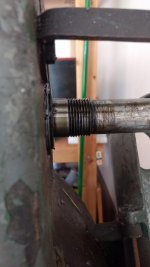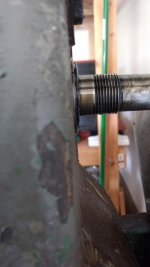spfrazierjr
Plastic
- Joined
- Apr 13, 2017
Hello.
I bought this machine a few months and am just now getting it setup in my garage. I noticed there was play in the spindle, so I tried taking it apart to inspect the bearings. I know from the manual that the spindle comes out of the front, but the rear inner bearing race is stuck to the spindle. What is the best way to remove it?
I'll try to get some pictures up later.
Thanks,
Scott
I bought this machine a few months and am just now getting it setup in my garage. I noticed there was play in the spindle, so I tried taking it apart to inspect the bearings. I know from the manual that the spindle comes out of the front, but the rear inner bearing race is stuck to the spindle. What is the best way to remove it?
I'll try to get some pictures up later.
Thanks,
Scott







